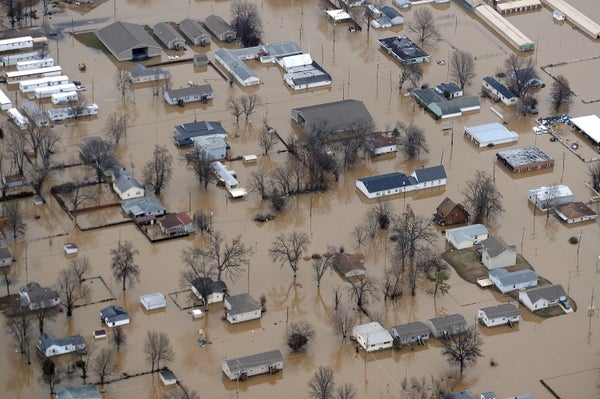CLIMATEWIRE | The annual federal assessment of the nation’s disaster preparedness for the first time cites problems with out-of-date state and local building codes, which have left millions of homes highly vulnerable to the impacts of climate change.
The newly released National Preparedness Report says the failure of most states to adopt new building codes that account for climate change is “one of the most significant factors that compounds risk and increases costs from natural hazards.”
Buildings constructed under new codes are better able to withstand storms, flooding and wildfire, which are becoming more frequent and intense due to climate change, the report says.
On supporting science journalism
If you're enjoying this article, consider supporting our award-winning journalism by subscribing. By purchasing a subscription you are helping to ensure the future of impactful stories about the discoveries and ideas shaping our world today.
But a separate federal report that assesses state and local building codes shows that only 31 percent of hazard-prone areas have adopted a recent version. Building codes are written by national and international expert panels and updated every three years.
“Communities that do not implement current building codes face elevated natural hazard risk impacts,” says the 59-page preparedness report, written by the Federal Emergency Management Agency.
The report could fuel efforts by the Biden administration to encourage and entice states to update their building codes as a way of addressing climate change. President Joe Biden has taken particular interest in promoting new codes that govern both building construction and building energy use.
The Energy Department is offering states a total of $400 million in grants to improve their building energy codes to cut energy consumption and carbon emissions. Households save an average of $162 a year in homes built under new energy codes, the preparedness report says.
The grant money comes from a new building-code program created through the bipartisan infrastructure law of 2021.
FEMA announced in October that it plans to offer each state $2 million next year to improve its building construction code.
The preparedness report notes that the federal government has no authority over building codes, which are adopted by states, counties and municipalities. The lack of federal authority forces the government to rely on grant programs and disaster aid to encourage climate-resilient construction.
At the same time, the decentralization of building-code adoption has produced “a wide variation in the adoption of model building codes,” the report says.
The inconsistency, along with the increasing intensity of disasters, “compound” the threats posed by storms, flooding and heat waves and weaken the nation’s overall disaster preparedness, the report says.
Some states have resisted efforts to improve building codes. In August, North Carolina’s Republican-controlled legislature blocked Democratic Gov. Roy Cooper’s plan to strengthen the state’s energy codes. In June, U.S. House Republicans sought to defund DOE’s new energy-code grants.
Some homebuilders and their advocacy groups oppose the adoption of new building codes, saying they will lead to increased construction costs.
The National Preparedness Report says new codes save communities billions of dollars and decrease long-term home costs by preventing some damage.
Despite the well-known opposition of many homebuilders to newer building codes, the preparedness report says builders “should encourage clients to utilize up-to-date, hazard resilient building codes, even when not required, to address consumers’ growing concerns over disaster damages due to climate change.”
Reprinted from E&E News with permission from POLITICO, LLC. Copyright 2023. E&E News provides essential news for energy and environment professionals.
